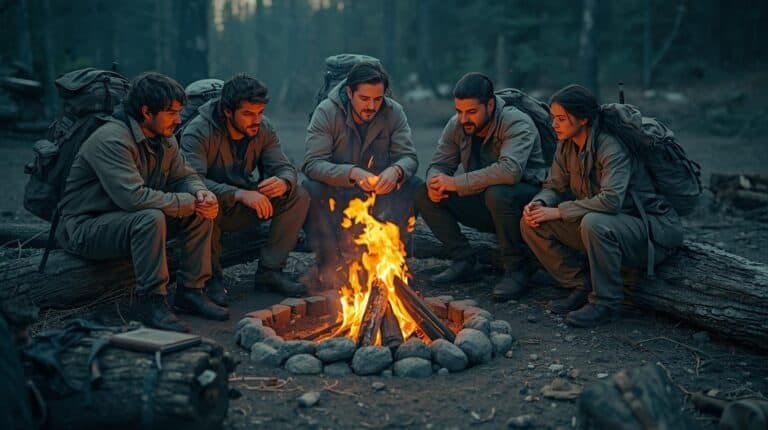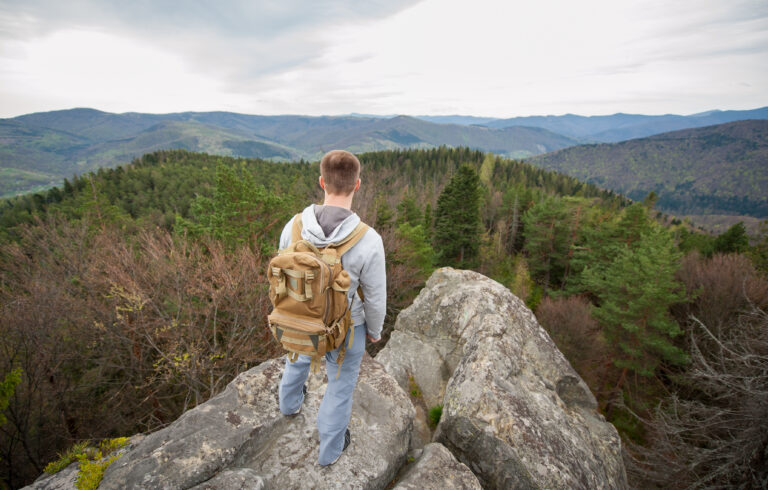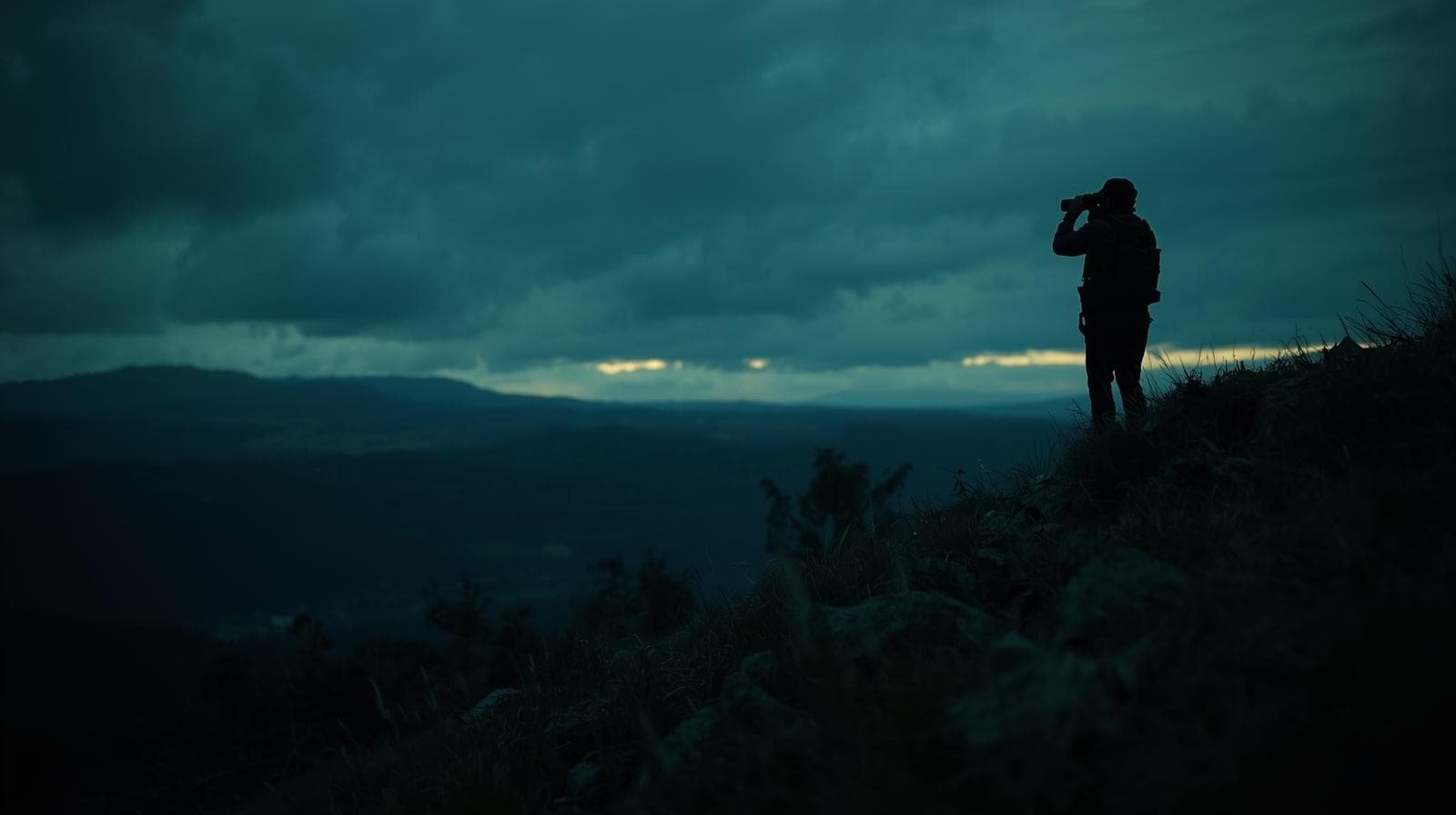
Situational Awareness Mastery: Mental Toughness for Preppers Who Refuse to Panic
Here’s the brutal truth: your $300 tactical flashlight, your bug-out bag, even that brand-new optic you swore was a “must-have”… they’re all dead weight if you don’t notice the threat until it’s already on top of you.
Gear doesn’t save you—awareness does.
Most preppers obsess over stockpiles and hardware, but the first thing to fail in a crisis isn’t usually your kit. It’s your mind. Situational awareness isn’t about being paranoid or “hyper-vigilant” like a B-movie survivalist. It’s about sharpening the one tool you always carry: your brain. (Well most of us do)
Get this right, and you’re the calm one who spots the ambush before it happens, notices the smoke plume before the fire spreads, and sees the empty shelves before the herd clears the aisle. Get it wrong, and you’re another unprepared statistic with a well-equipped backpack and no idea what’s going on.
What Is Situational Awareness?
Let’s cut the fluff: situational awareness is simply the ability to accurately perceive what’s happening around you, process it quickly, and act effectively.
Sounds easy, right? Wrong.
Our modern world is built to destroy awareness. Phones, earbuds, constant noise—everything competes to hijack your attention. You’ve seen it: the guy crossing a parking lot at night with headphones blasting, eyes glued to Instagram, completely oblivious that he just walked past a sketchy dude sitting in a car with the engine idling.
That’s Condition White—unaware, unprepared, and one distraction away from being blindsided.
For preppers, situational awareness isn’t optional. It’s mental armor. It’s how you balance vigilance with sanity, awareness with calm.
The Cooper Color Code: Mind States for Survival
Jeff Cooper, a Marine and firearms instructor, came up with a simple system to describe mental readiness. Preppers should memorize this the way they memorize rifle safety rules. It’s not just about combat—it’s about mental health under stress.
Condition White – Blissfully Unaware
- The Mindset: Distracted, zoned out, unprepared.
- The Example: Texting while pumping gas, walking with both earbuds in, letting your cart block the grocery aisle while a fight starts behind you.
- The Risk: You can’t react if you don’t see the problem. Criminals, accidents, even disasters pick off people in White first.
- Mental Health Tie-In: Living here isn’t just unsafe, it’s lazy. It’s how anxiety creeps in later, because you’re blindsided constantly.
Condition Yellow – Relaxed Awareness
- The Mindset: Alert but calm. You’re casually scanning, not paranoid.
- The Example: You notice exits in a restaurant without obsessing, register who just walked into your gym, or glance at cars in the parking lot before you open your door.
- The Benefit: This is where you want to live. It’s sustainable. It sharpens perception without burning mental energy.
- Mental Health Tie-In: Yellow is mindfulness in tactical form. You’re grounded, breathing steady, engaged in the present moment instead of lost in fear or distraction.
Condition Orange – Specific Alert
- The Mindset: You’ve identified something that doesn’t fit. Your awareness zooms in.
- The Example: A stranger follows you for three blocks. You hear glass breaking near your camp at night.
- The Benefit: You’re ready to act if needed. But you haven’t pulled the trigger on fight or flight.
- Mental Health Tie-In: Living here 24/7 wrecks your nerves. But short bursts train resilience and sharpen instincts.
Condition Red – Action Mode
- The Mindset: The fight is here. You’re acting.
- The Example: Drawing your firearm, slamming on the brakes, grabbing your kid before they step into traffic.
- The Risk: You can’t stay here long. Adrenaline dumps fry your system.
- Mental Health Tie-In: If your life is constant Red, you’re not a prepper—you’re paranoid. That’s how you end up with chronic stress, PTSD-like symptoms, and a bunker nobody wants to visit.
🟡 Training Your Mind to Stay in Yellow
Here’s the truth about situational awareness for preppers: most people either live in Condition White (completely unaware) or burn out in Condition Orange/Red (constantly on edge). Neither one will keep you alive—or sane—for long.
The prepper sweet spot is Condition Yellow—the zone of calm, controlled situational awareness. It’s where you’re alert but not anxious, watchful but not wired. You’re tuned into your environment without letting fear dictate your mood. That balance is the holy grail of survival mindset and the foundation of real mental preparedness.
Because when things go wrong, your situational awareness is what keeps you ahead of the chaos—not your flashlight, not your ammo, not your stockpile.
Here’s how to train your brain to stay in that perfect middle ground, where awareness is instinct, not effort.
1. Tactical Mindfulness: The Core of Situational Awareness
Forget the buzzword version of mindfulness. Tactical mindfulness is about deliberate observation—what the military and law enforcement train as active situational awareness.
Every time you enter a new environment, make it a mini awareness drill:
- Pause. Take one calm, controlled breath.
- Note your exits and any possible cover.
- Scan faces and behaviors.
- Ask yourself: What’s new? What’s missing? What doesn’t fit?
This builds real-time situational awareness under normal conditions so that in chaos, your instincts already know what to do.
Bonus: breathing triggers your parasympathetic system—the part that calms panic and sharpens perception. The more relaxed you are, the more effective your situational awareness becomes.
2. The 5–3–1 Scan Rule
The 5–3–1 method is your cheat code for structured situational awareness:
- 5 broad sweeps – scan the big picture (terrain, crowd movement, exits, weather).
- 3 medium checks – assess closer objects (vehicles, doors, shadows, sound sources).
- 1 detail check – focus on one specific anomaly: a glance, reflection, or smell that doesn’t belong.
This rhythm prevents tunnel vision while keeping your situational awareness layered—macro to micro. Use it walking into stores, hiking trails, or just stepping out of your truck.
Practicing this method builds mental muscle memory, and the more you do it, the less you think about situational awareness—it becomes who you are.
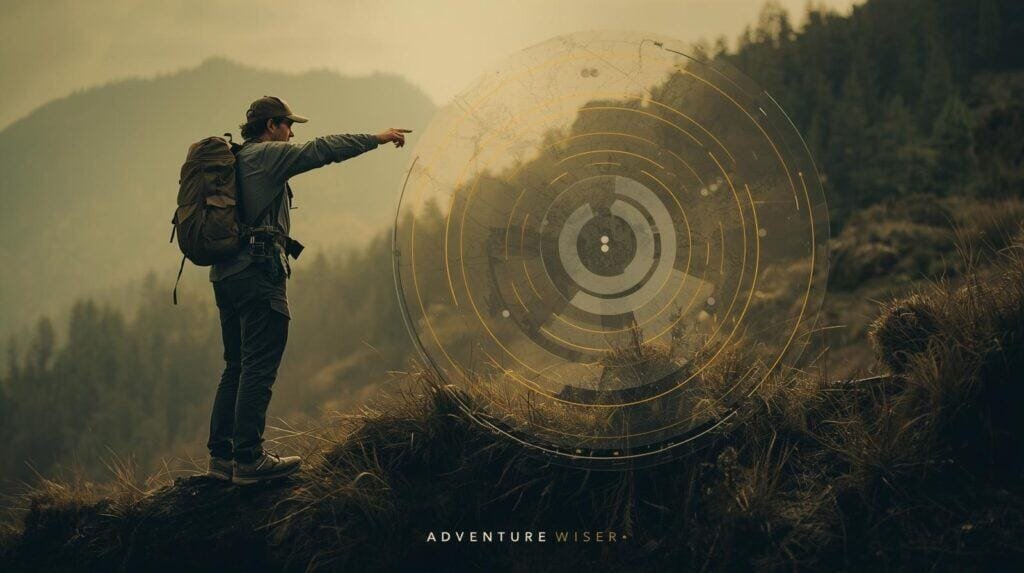
3. Kill the Doomscroll — It Destroys Situational Awareness
There’s a dangerous myth that consuming endless crisis content online builds awareness. Wrong. Doomscrolling kills real situational awareness faster than a blindfold.
The more time you spend watching chaos through a screen, the less tuned-in you are to your actual surroundings. Situational awareness starts with presence, not panic.
So trade one doomscroll session for what I call a Neighborhood Recon Walk:
- Walk your usual route and note what’s different today—parked vehicles, new faces, construction, sounds.
- Identify choke points, exits, or escape paths without obsessing.
- Keep your phone in your pocket.
You’ll realize how much you’ve been missing when you stop outsourcing awareness to your feed and start practicing situational awareness in real life.
Pro Gear Tip: Bring an Olight Warrior Mini 3 flashlight or jot notes in a Rite in the Rain pad. Tools reinforce confidence—and confidence keeps your situational awareness sharp.
4. Train Situational Awareness in Safe Spaces
You don’t need a disaster to sharpen your mind. The best situational awareness training happens in calm, low-stakes environments.
Try these drills:
- Hiking: Track changes in terrain, animal signs, and weather patterns.
- Driving: Identify escape routes, traffic patterns, and mirror blind spots.
- Camping: Listen for repetitive vs. unusual night sounds, and practice identifying them before you see them.
These exercises help you develop instinctive situational awareness—a calm scanning rhythm that doesn’t rely on adrenaline. When it matters, you’ll already be ahead of your environment, not overwhelmed by it.
5. Visualization: Mental Rehearsal for Situational Awareness
Elite soldiers, firefighters, and pilots all use visualization to prepare for stress before it arrives. Preppers should too.
Imagine realistic survival scenarios and mentally walk through them using your situational awareness as a compass.
- Power goes out at night—what’s your first move?
- Stranger approaches your campsite—how do you respond?
- Your vehicle breaks down on a rural road—what’s your next step?
By pre-playing these mental movies, you’re programming your situational awareness system. When the real event happens, your brain won’t panic—it’ll recognize the pattern and respond smoothly.
6. Journal Your Situational Awareness
Here’s an old-school tactic that works: write down what you notice.
At the end of each day, record three examples of situational awareness moments—times you picked up on something subtle before others did.
Examples:
- “Heard sirens before anyone else noticed.”
- “Noticed low tire pressure in neighbor’s truck before it blew.”
- “Saw a kid wandering off at the park—alerted the parents.”
Writing reinforces learning. Over time, you’ll see how your situational awareness evolves from reactionary to intuitive.
Pro tip: A weatherproof Rite in the Rain tactical notebook keeps this habit alive even when nature doesn’t cooperate.
7. Let Gear Support Your Situational Awareness, Not Replace It
Your tools should enhance awareness, not replace it. Good equipment frees your mind to observe instead of fumble.
Keep your EDC layout consistent—same flashlight, same knife, same pocket locations. That way, when stress spikes, your hands move automatically, and your situational awareness stays focused outward instead of panicking over gear placement.
Every second you save fumbling is another second of clear situational awareness—and that’s the difference between reacting and surviving.
8. Recognize When You’re Slipping Out of Yellow
Even the most disciplined preppers drift. You’ll know you’re losing situational awareness when:
- You start jumping at small noises.
- You forget details you’d normally catch.
- You zone out in public or scroll without thinking.
Those are warning lights on your mental dashboard.
Fix it by hitting reset:
- Breathe deep.
- Stretch your shoulders.
- Pray, meditate, or take a short sensory break.
You can’t maintain high-level situational awareness without rest. A calm, rested mind always perceives better than a wired one.
9. Situational Awareness Is a Lifestyle, Not a Setting
True situational awareness doesn’t flick on like a switch when SHTF—it’s baked into how you live.
You carry yourself differently. You walk with intention. You listen more than you talk. You scan without staring.
When awareness becomes a lifestyle, you don’t “activate” it in danger—you’re already there. That’s what separates the calm, capable prepper from the panicked mob.
Practice until situational awareness feels like breathing. That’s when you know you’ve mastered it.
Quick Recap: The Yellow Zone Commandments
| Rule | Practice | Why It Matters |
|---|---|---|
| 1 | Stay calm, not paranoid | Sustainable situational awareness |
| 2 | Observe patterns, not panic | Improves decision-making |
| 3 | Train daily in low stress | Builds habit under pressure |
| 4 | Journal what you notice | Sharpens memory and intuition |
| 5 | Rest when overloaded | Prevents burnout and fatigue |
Field Wisdom from the Trail
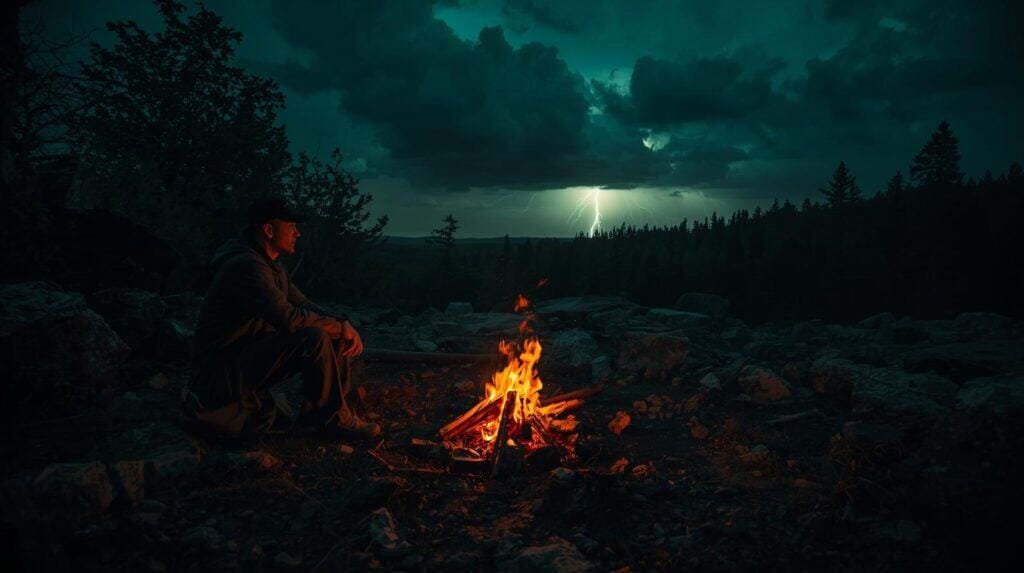
One stormy night in the Ozarks, I caught the faint smell of burning pine on the wind—a small, easy-to-miss clue. My situational awareness kicked in. I moved camp 200 yards uphill. Ten minutes later, lightning struck a tree exactly where I’d been sitting.
That wasn’t luck. It was years of practicing situational awareness until it became second nature.
That’s the power of staying in Yellow: calm observation that gives you seconds of warning—and in survival, seconds are everything.
Wrapping Up
If prepping is about survival, situational awareness is about staying human while doing it. It’s not fear—it’s freedom. It’s the art of living alert without losing peace of mind.
So start today. Breathe. Look around. Listen deeply.
Stay in Yellow—and let your awareness do what your gear never could: keep you alive, calm, and ahead of the game.
Heads-Up, Fellow Preppers:
Some links in this post are sponsored or affiliate links. If you click and buy, I may earn a small commission—enough to restock my peanut butter and maybe add one more can of chili to the stash. I only recommend gear I trust, use, and would hide in a bug-out bag.




